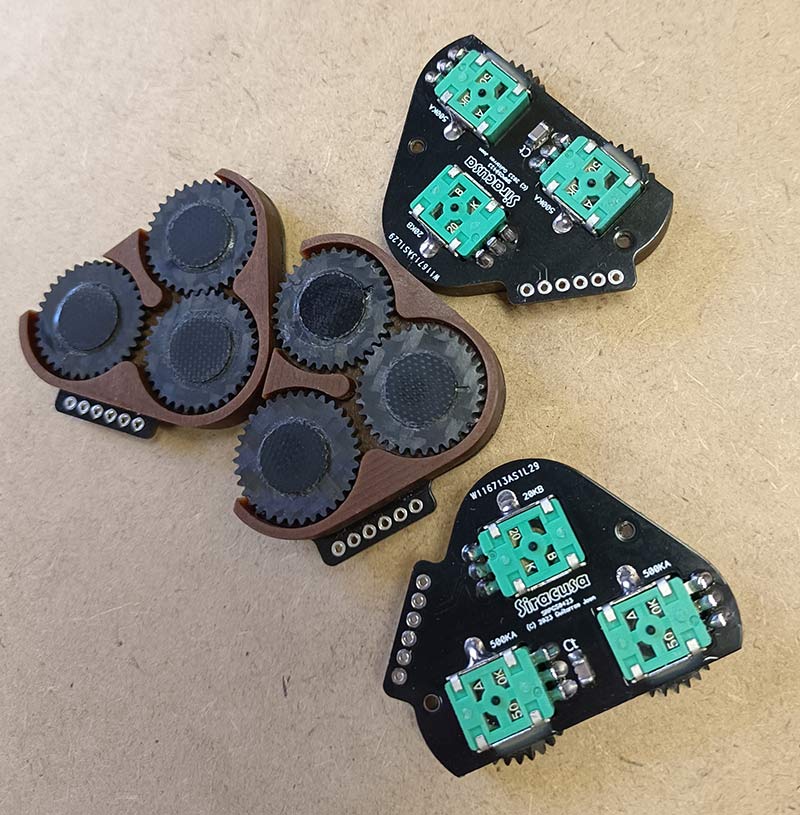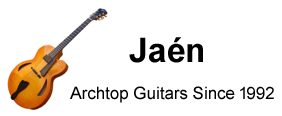Hi Mak,
First of all, thanks for your message. I haven’t been lucky getting replies from shops in Europe (most didn’t even tell me that they were not interested at all). I am happy that you have been the exception because, with everybody telling me how slow it has become to sell archtops, you are there in London with a significant stock. I like that the guitar is surrounded with other of its kind.
The guitar I’ll show you is a “Siracusa 16R+”:


It is an archtop, 16 inches. Not a common archtop, as it is carved very thin and responsive. I would say it sounds much more like a flat top, with all the bass that you miss in 99% of archtops. This is done while still keeping the conventional look of the guitar which is, I think, the main value of my design. I keep the archtop look although, since early in the design, I had to leave out the f-holes because the most responsive area of the top is precisely where these are usually cut.
If you ask me, I value the effort that I put into improving the acoustics more than all the electric design (explained later). This guitar will shine among the guitars in your shop. Please don’t get me wrong: it’s not the guitars in your shop that are bad, the problem is that archtops are traditionally overbuilt instruments that don’t sound right if played acoustically. This happens even when they are sold as acoustic guitars. The difference between my guitar and conventional archtops is not in small subtleties. It is HUGE, and that’s why I want to go there and show you.
I started changing my designs after I tried one of Ken Parker’s archtops in Berlin in 2015 but decided that, as much as I liked the tone of his guitars, there were radical ideas in their design that were not for me.
The guitar has a floating pickup and a piezo, both made by myself (sorry for the wood dust everywhere!):






It is not easy to describe the electronics, although the player will find them easy to use after a few minutes. There is a description in the manual, that you can find here: https://www.guitarrasjaen.com/maksDoc/MANSR+V10.pdf Please go to page 13 where the controls are explained. Also, read the box in page 14, that explains the “Enhanced Single Coil” mode that is responsible for the “+” in the name of the model, and which is really unique. This guitar was born as a “Siracusa 16R”, without the “+” in its name, but I was so excited to try the enhanced thing that I couldn’t resist to spend a few hours making the improvement. Bad news for me: I won’t use the “old” pickup and PCB in the future, so that’s lost work.
The bridge has ebony feet, and is extremely light. The saddle has the piezo crystals inside, that really work even better than any piezo built by any of the great companies: never a string louder than another, even if the angle of the strings above the bridge is quite flat, which means low pressure on the crystals (this is one of the reasons why I made this myself). The crystals are on a carbon base hidden inside the saddle, to avoid any sagging.
The magnetic pickup is made of ebony. It is the last iteration in a loooong story of designs that have gotten better. It integrates the volume controls for itself and for the piezo.
The controls below the pickguard are a tone pot for the magnetic pickup and a master volume that modifies the piezo and the magnetic at the same time. This is done with gears , as there is no room below the pickguard to use stacked potentiometers:

Those are long life pots (100.000 turns!) with conductive polymer technology instead of carbon so they will be noise free for a very long time.
The tailpiece has an original way of grounding the strings, reliable and discrete. It can be seen here, at least the part that can be seen from the outside:

The headstock has machines that are hidden inside. They are modified Schertlers:



My name is there, in maple wood. There is no mother-of-pearl anywhere in this guitar (I did this on other guitars so that it was easier to export to USA–now I always do it).
The covers at the back of the peghead are ebony, but they are laminated over a thin carbon shim, so they won’t break at the screw holes.
The back, sides and bindings are quilted sapele, an amazing wood:





The holes on the battery cover are for checking the battery, as explained in the manual (page 12).
The sides are very robust, made with a method that I devised a few years ago, explained here: https://www.guitarrasjaen.com/peoneta/
The finish is (still) nitrocellulose by Votteler. They don’t make it anymore, but I think I still have enough for six or seven more guitars.
If you like this guitar, I have another of a different (but similar) model (Siracusa 16E+) that will be ready soon.




The woods are the same, but it has binding at the neck and a better case by Benedykt:

This guitar will have two pickups. Manual here: https://www.guitarrasjaen.com/maksDoc/MANSE+V10.pdf
It has also a “Enhanced Single Coil” mode, and the mid position of the pickup selector is more logical (and useful) than on conventional guitars (see pages 13, 14 and 15 in the manual).
The binding at the fretboard won’t get dirty as maple binding does. First, because sapele is more rot resistant. Second, because it is sapwood sapele, which is quite porous, so it absorbs thin cyanochrylate very easily, stabilising it and making it hard as plastic.
The pickguard, with the two pickups:

A closeup of the pickup selector, made of ebony (the switch has a very uncommon shaft diameter, so I had to design and make this — and I am so happy that I did because it looks amazing in wood).

The next guitar will be of this type (Siracusa 16E+) also. Quite similar to that one, and it goes fast.
I also have more sapele back+sides sets of even better quality, that I’ll be using soon. This one, for example:

The guitars made with those will be amazing (I have three sets).
I have been making guitars like these, improving the design with every one that I made (no two are alike). I have been selling them regularly to TFOA.eu, where they sold for 6000€. This is what they had to say for the second that I sent them, a few years ago: https://www.vintageandrare.com/product/Jaen-Jan-Siracusa-Archtop-Spruce-Flamed-Maple-76798
This summer I went to New York and gave a guitar to the guys at “South Shore Guitar Boutique”. It sold in less than a month, for 6500 USD. Then I sent them two more, with some price increase (7500 and 7800 USD) and these haven’t sold yet. That is a small but very active shop. In TFOA they always sold very well.
I would like to travel there with the first guitar above around January 10 or 11, as tickets are cheaper in those dates. I would get back to Spain the same day, I think I have time. Will that be possible?
Thanks for the attention, I hope to hear from you soon!

